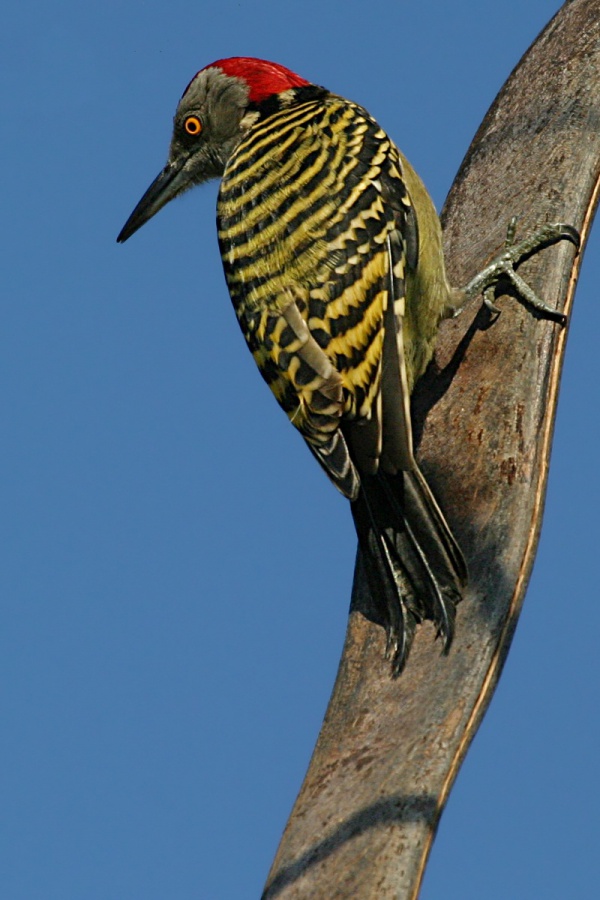Facts About Hispaniolan woodpecker
The Hispaniolan woodpecker is a striking, medium-sized bird native to the Caribbean island of Hispaniola. Males sport a red crown and nape, while females have a black crown and a red nape. Their backs are adorned with yellow and black stripes, complemented by a vivid red tail base and a black tail. These birds are quite vocal and often forage in noisy groups, feeding on a varied diet of insects, fruits, seeds, and sap.
You'll find these woodpeckers in a range of habitats across Hispaniola, including forests, plantations, swamps, and even urban parks. They are social nesters, frequently forming colonies where multiple pairs will use the same tree for nesting. They excavate their nests in tree trunks and branches, which may later be reused by other bird species.
As omnivores, the Hispaniolan woodpeckers have a diet that heavily features insects and fruits. However, they can be a nuisance to farmers, particularly in the Dominican Republic, as they are known to damage crops. The nestlings are fed a diverse diet by their parents, which includes both regurgitated and non-regurgitated food. Interestingly, males and females exhibit different foraging behaviors, a phenomenon known as sexual dimorphism.
For communication and territorial defense, these woodpeckers use visual displays such as bill-oriented gestures and dihedral flights. They undergo molting during the breeding season, which is an unusual timing for this process. Nesting can occur throughout the year, and communal nesting is sometimes observed. Both parents participate in building the nest, incubating the eggs, and feeding the young.

 Dominican Republic
Dominican Republic